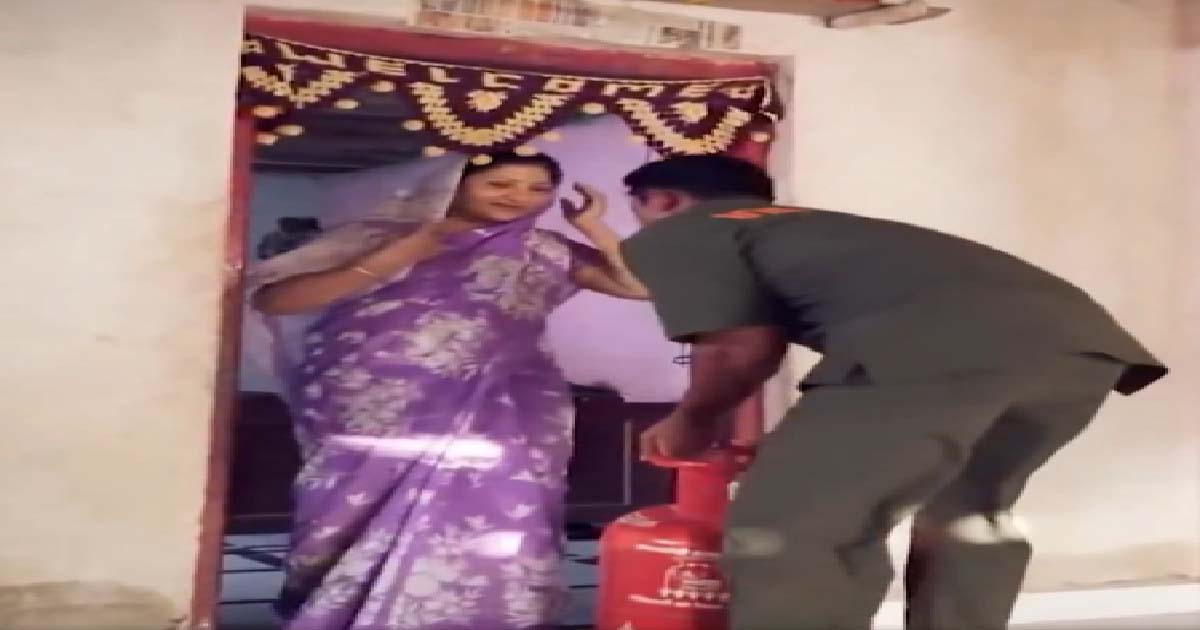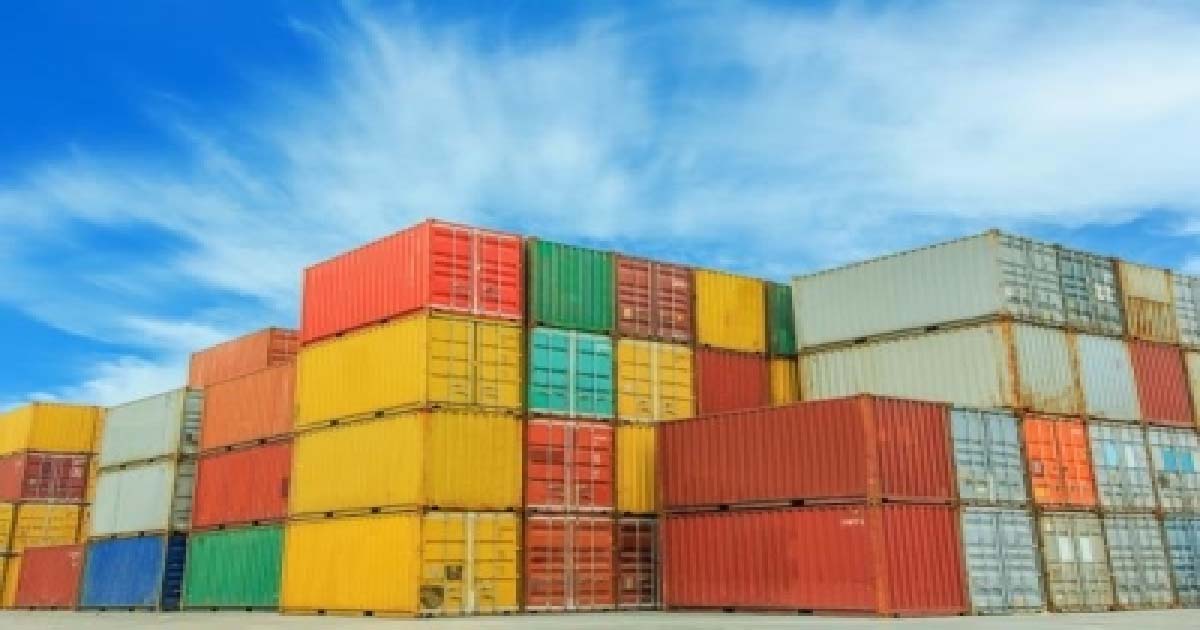Business
Budget 2022: Increase in custom duty on Aluminium scrap from 2.5 to 10% is key expectation

Steel Industry.
As the Indian economy pushes forward to grow at 9 per cent and above over the next few years, a key challenge for the country would be to rebalance its energy needs in favour of renewable sources by 2030 to 50 per cent as per the Paris agreement.
This is where the Aluminium sector will play a greater than ever before role. Extensive growth in electric vehicles, renewables, modern infrastructure, energy efficient consumer goods and greater dependence on strategic sectors such as aerospace and defence, will drive Aluminium consumption to grow at CAGR of 10 per cent or more. For example, Aluminium usage in EV battery is 40-50 per cent more than a normal ICE. Being 3 times lighter than steel it aids in fuel efficiency making it an efficient choice for EVs.
However, the Indian aluminium industry is struggling to revive itself over the last two years following the unprecedented Covid pandemic. The declining domestic producers market share with surging imports coupled with significant cost escalation for primary producers due to a rise in input costs of critical raw materials, escalating ocean freights & logistics costs due to container shortage, current coal crunch situation etc, is restricting the industry’s ability to support the future of the country at a time when India cannot rely on import sources alone to fuel this growth.
To give relief to the sector, there is a need for urgently looking at the duty structure. The basic custom duty on Aluminium and Aluminium scrap is not in line with other non-ferrous metals like Zink, lead, nickel and tin which is a huge disadvantage for domestic Aluminium producers. The industry expects increase in tariff rate of basic custom duty or peak custom duty rate from existing 10 per cent to 15 per cent. Currently custom duty on Primary Aluminium is 7.5 per cent, Downstream Aluminium is 7.5 per cent to 10 per cent and Aluminium scrap is only 2.5 per cent. This is the reason why despite having significant presence of primary Aluminium capacity and potential to generate sufficient domestic scrap, India’s consumption of scrap is 100 per cent import dependent. The way forward is to increase custom duty on Aluminium srap from 2.5 to 10 per cent.
Primary aluminium industry is facing severe threat from the increasing import of Aluminium scrap. The share of scrap in total imports increased from 52 per cent in FY-16 to 66 per cent in FY-21. resulting in Forex Outgo of $2 billion (Rs 15,000 crore).
What is also affecting the Indian industry is China’s renewed measures to restrict Scrap imports through National Sword Policy, which is leading to greater inflow of scrap into India. China imposed 25 per cent duty on Aluminium Scrap imports from USA, and classified Aluminium Scrap in restricted import list from July, 2019, with plan to completely ban all scrap and waste imports. Post that the share of import from the US in China’s total Aluminium scrap imports has declined from 53 per cent in 2017 to just 16 per cent in 2019. India has overtaken China as world’s largest aluminium scrap importer due to Chinese measures. As a result, entire global scrap chain is shifted to India in absence of any quality or BIS standards for scrap recycling/ usage and imports in the country. A major threat is from US scrap imports, as US is diverting large volume of scrap to India, since EU and other developed countries have stringent standards for scrap. The import from US as share of India’s total scrap imports increased from 8 per cent in FY16 to 24 per cent in FY21.
This precarious situation can be resolved by safeguarding the domestic industry against these non-essential imports in the upcoming union budget.
The industry demands increasing the basic custom duty on Chapter-76 (Aluminium & articles).
Business
Number of poor getting subsidised LPG under PMUY scheme touches 10.41 crore

New Delhi, Jan 6: Petroleum and Natural Gas Minister Hardeep Singh Puri said on Tuesday that as many as 10.41 crore LPG connections have already been provided for the supply of subsidised cooking gas to poor families under the Pradhan Mantri Ujjwala Yojana as the government steadily progresses to achieve its target of covering 10.6 crore families under the scheme.
Puri further stated that the Pradhan Mantri Ujjwala Yojana has succeeded in building a nationwide system that delivers clean cooking fuel reliably with every refill.
“Under the leadership of Prime Minister Narendra Modi, Ujjwala has transformed clean cooking from a welfare measure into a reliable everyday infrastructure,” the minister said in a post on X.
LPG is being made affordable for the poor through a targeted subsidy of Rs 300 per 14.2 kg cylinder for up to nine refills per year under the PMUY scheme. This intervention has resulted in a steady rise in LPG consumption. The average per capita consumption increased from about three refills in 2019-20 to 4.47 refills in FY 2024-25 and further to a pro-rated level of about 4.85 refills per annum during FY 2025-26, indicating sustained adoption of clean cooking fuel, according to figures compiled by the Ministry of Petroleum and Natural Gas.
To clear pending applications and achieve saturation of LPG access, the government approved the release of 25 lakh additional LPG connections during FY 2025-26. Subsidy targeting and transparency were improved with the acceleration of Aadhaar authentication. As on December 1, 2025, biometric authentication covered 71 per cent of PMUY consumers and 62 per cent of non-PMUY consumers, according to an official statement.
Consumer safety was strengthened through the nationwide Basic Safety Check campaign. More than 12.12 crore free safety inspections were conducted at customer premises, and over 4.65 crore LPG hoses were replaced at discounted rates, significantly enhancing awareness and safety standards in domestic LPG usage, the statement added.
Business
Sensex, Nifty post mild losses as oil and gas stocks trade lower

Mumbai, Jan 6: Indian benchmark indices posted mild losses on Tuesday, weighed down by losses in oil and gas stocks. Amid impressive corporate updates that had lifted expectations of stronger quarterly earnings, concerns of potential additional tariffs by US weighed on the domestic markets.
As of 9.30 am, Sensex slipped 246 points, or 0.29 per cent to 85,193 and Nifty eased 70 points, or 0.27 per cent to 26,180.
Main broad-cap indices performed almost in line with benchmark indices, with the Nifty Midcap 100 down 0.08 per cent, while the Nifty Smallcap 100 shed 0.02 per cent.
Immediate support lies at 26,100–26,150 zone, and resistance placed at 26,400–26,450 zone, market watchers said.
The US markets rallied overnight ignoring Venezuela crisis. As crude prices fall due to increased supply from Venezuela, the market appears to be betting that the Venezuela crisis will be positive in medium to long term, analysts said.
However, geopolitical surprises are likely, so it is too early to decide and investors should consider increasing their cash position, they added.
The banking sector have strengthened due to increasing credit growth, even though deposit mobilisation remains a challenge.
Asian defence stocks showed strong surge for a second straight session, even as the region traded mixed, with investors assessing geopolitical risks after the US attack on Venezuela.
In Asian markets, China’s Shanghai index added 1.14 per cent, and Shenzhen gained 0.79 per cent, Japan’s Nikkei added 0.69 per cent, while Hong Kong’s Hang Seng Index inched up 1.68 per cent. South Korea’s Kospi declined 3.99 per cent.
The US markets were mostly in the green zone on the last trading day even as Nasdaq added 0.69 per cent. The S&P 500 gained 0.64 per cent, and the Dow moved up 1.23 per cent.
On January 5, foreign institutional investors (FIIs) sold net equities worth Rs 36 crore, while domestic institutional investors (DIIs) were net buyers of equities worth Rs 1,764 crore.
Business
India pushing ahead to diversify exports amid US tariff turmoil: Report

New Delhi, Jan 5: When India reached a free-trade agreement with New Zealand in a record time of nine months towards the end of December, this was a clear signal of New Delhi’s plan to diversify the country’s exports away from the US and this approach is expected to gather pace going ahead, according to an article in the South China Morning Post.
The article highlights that ever since US President Donald Trump imposed penal import tariffs of 50 per cent on India last year, New Delhi has maintained a resolute approach to the punitive levies, even as it has kept the door open to negotiations.
The article points out that the trade deal with New Zealand last month was the third such deal that came close on the heels of the free trade agreements with the United Kingdom and Oman.
The US is India’s largest export market, receiving about 18 per cent of its total goods exports, including items such as garments and leather products, with a vast diaspora readily snapping up products shipped from their homeland.
While it remains unclear whether the two countries can negotiate a trade deal given India’s firm position on opening sensitive sectors such as agriculture and dairy to US products, experts are sceptical that Washington will significantly roll back its tariffs, the article states.
However, it observes that India is not putting all its eggs in the US basket and is actively seeking free trade pacts with other countries to diversify its export markets amid the uncertainty created by the Trump administration.
Commerce Secretary Rajesh Agrawal has already said that India’s effort to diversify trade across geographies and sectors is paying off. There is positive export momentum that is likely to consolidate in the coming months.
The article also highlights that India’s exports in 2025 showed strong resilience and growth, reaching a record US$825.25 billion in the financial year 2024-25. The robust growth has continued into the current financial year, with exports in the April to November period rising 5.43 per cent to US$562.13 billion.
-

 Crime3 years ago
Crime3 years agoClass 10 student jumps to death in Jaipur
-

 Maharashtra1 year ago
Maharashtra1 year agoMumbai Local Train Update: Central Railway’s New Timetable Comes Into Effect; Check Full List Of Revised Timings & Stations
-

 Maharashtra1 year ago
Maharashtra1 year agoMumbai To Go Toll-Free Tonight! Maharashtra Govt Announces Complete Toll Waiver For Light Motor Vehicles At All 5 Entry Points Of City
-

 Maharashtra1 year ago
Maharashtra1 year agoFalse photo of Imtiaz Jaleel’s rally, exposing the fooling conspiracy
-

 National News1 year ago
National News1 year agoMinistry of Railways rolls out Special Drive 4.0 with focus on digitisation, cleanliness, inclusiveness and grievance redressal
-

 Maharashtra1 year ago
Maharashtra1 year agoMaharashtra Elections 2024: Mumbai Metro & BEST Services Extended Till Midnight On Voting Day
-

 National News1 year ago
National News1 year agoJ&K: 4 Jawans Killed, 28 Injured After Bus Carrying BSF Personnel For Poll Duty Falls Into Gorge In Budgam; Terrifying Visuals Surface
-

 Crime1 year ago
Crime1 year agoBaba Siddique Murder: Mumbai Police Unable To Get Lawrence Bishnoi Custody Due To Home Ministry Order, Says Report














